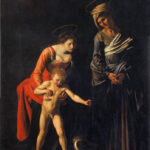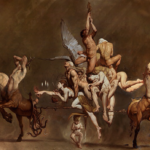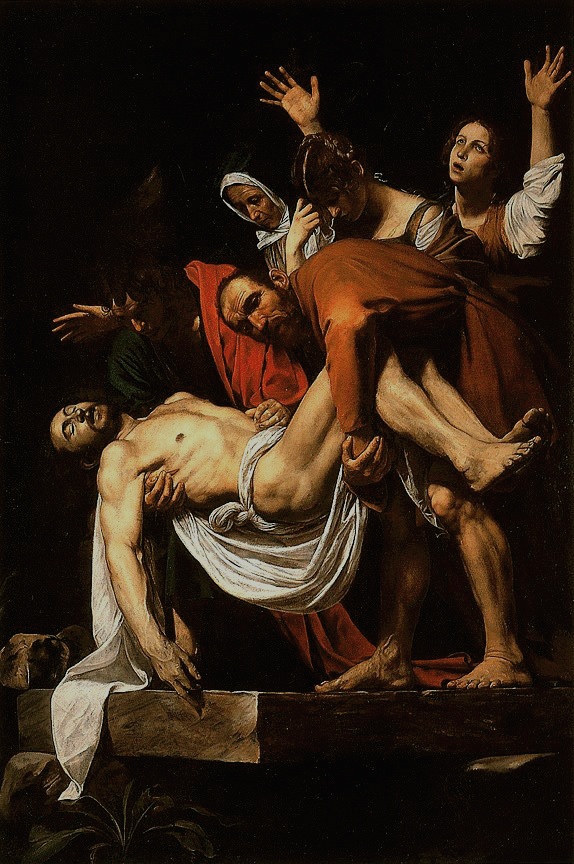
Michelangelo Merisi’s work, “The Entombment of Christ,” better known as Caravaggio, is more than just a painting; it’s a microcosm of emotions and symbolism that can even provoke the famous Stendhal Syndrome, a feeling of profound aesthetic emotion that sometimes strikes the art observer.
Stylistically, Caravaggio engages in a direct dialogue with Michelangelo Buonarroti, the artistic giant of the Renaissance. Caravaggio pays tribute to Buonarroti by drawing inspiration from two of his most emblematic works: the “Pietà” and the “Martyrdom of Saint Peter.” From the former, Caravaggio adopts the dislocated arm angle of the deceased Christ, a pose known in artistic language as the “Meleager’s arm.” From the “Martyrdom of Saint Peter,” he borrows the fervent gaze of Saint Peter and transfers it to his own painting of the “Crucifixion of Saint Peter.”
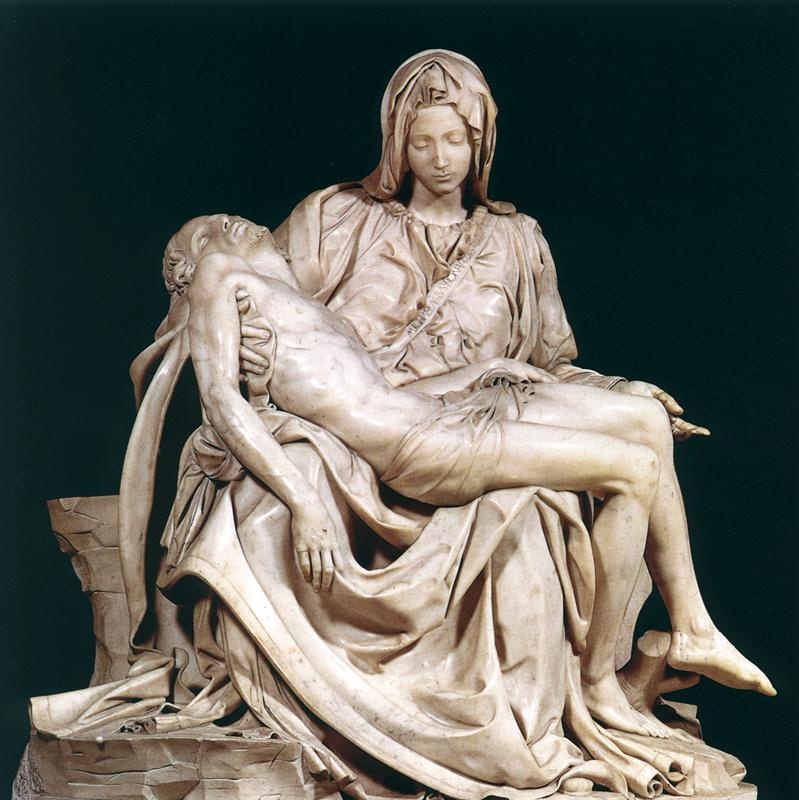
In Caravaggio’s painting, the group of figures surrounding the body of Christ is a collection of symbolism and identities. In the foreground, Nicodemus, barefooted, supports Christ, assisted by Saint John the Apostle and Evangelist, the apostle whom Jesus deeply loved. Behind them, the female figures: the Virgin Mary, Mary Magdalene, and Mary of Cleophas, with their arms stretched towards the sky in a gesture of despair and hope.
Beyond the palpable emotion and technical mastery, the painting is permeated with deep religious symbolism, reflecting Caravaggio’s spiritual fervor. At the center of the work, the large marble slab on which Nicodemus stands serves as a symbolic fulcrum. This stone is a resonant representation of the “cornerstone” mentioned in the Psalms: the one rejected by the builders but which becomes fundamental. Like Christ himself, the cornerstone upon which everything is founded and from which resurrection will occur.
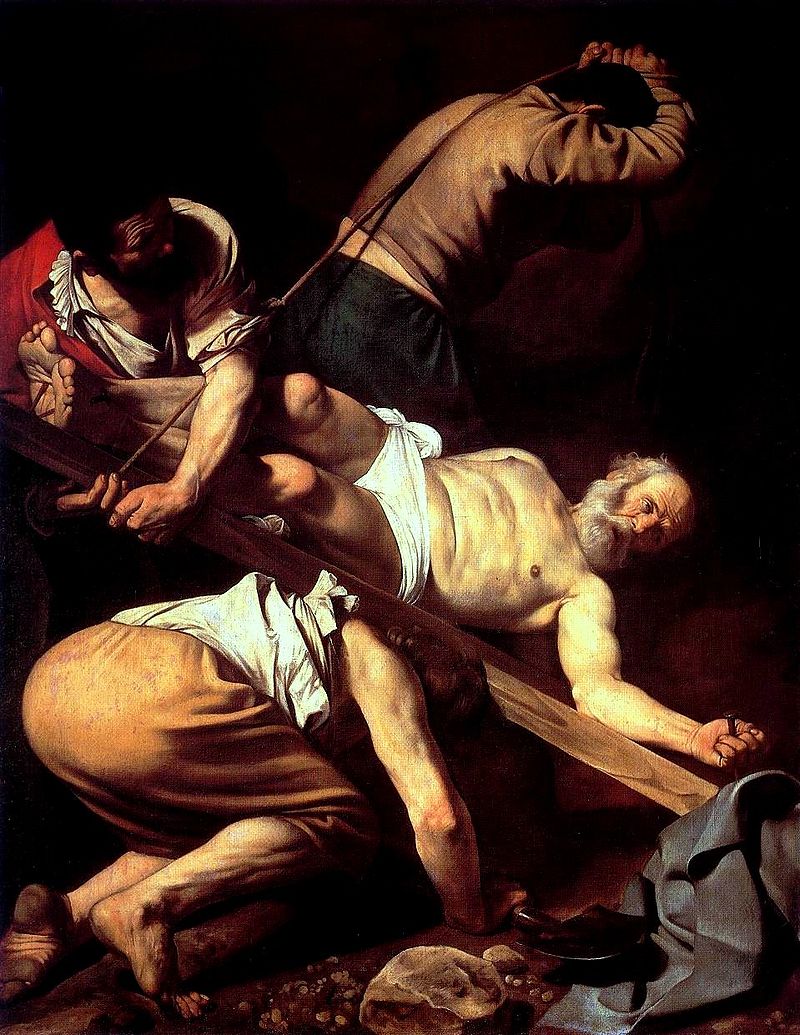
The vegetal element of the dwarf yew, perhaps almost negligibly placed in the work, should not be underestimated. It’s a further symbol of resurrection, of life triumphing over death. Some observers have even noticed how Christ seems to indicate the number three with his right hand fingers, hinting at his resurrection after three days in the tomb, touched by another finger of the same hand.
The works that celebrate and dialogue with Caravaggio’s piece are equally iconic: Michelangelo’s “Pietà” in St. Peter’s Basilica and his “Martyrdom of Saint Peter” in the Pauline Chapel, both in the Vatican, and finally Caravaggio’s “Crucifixion of Saint Peter” in the Cerasi Chapel of Santa Maria del Popolo in Rome.
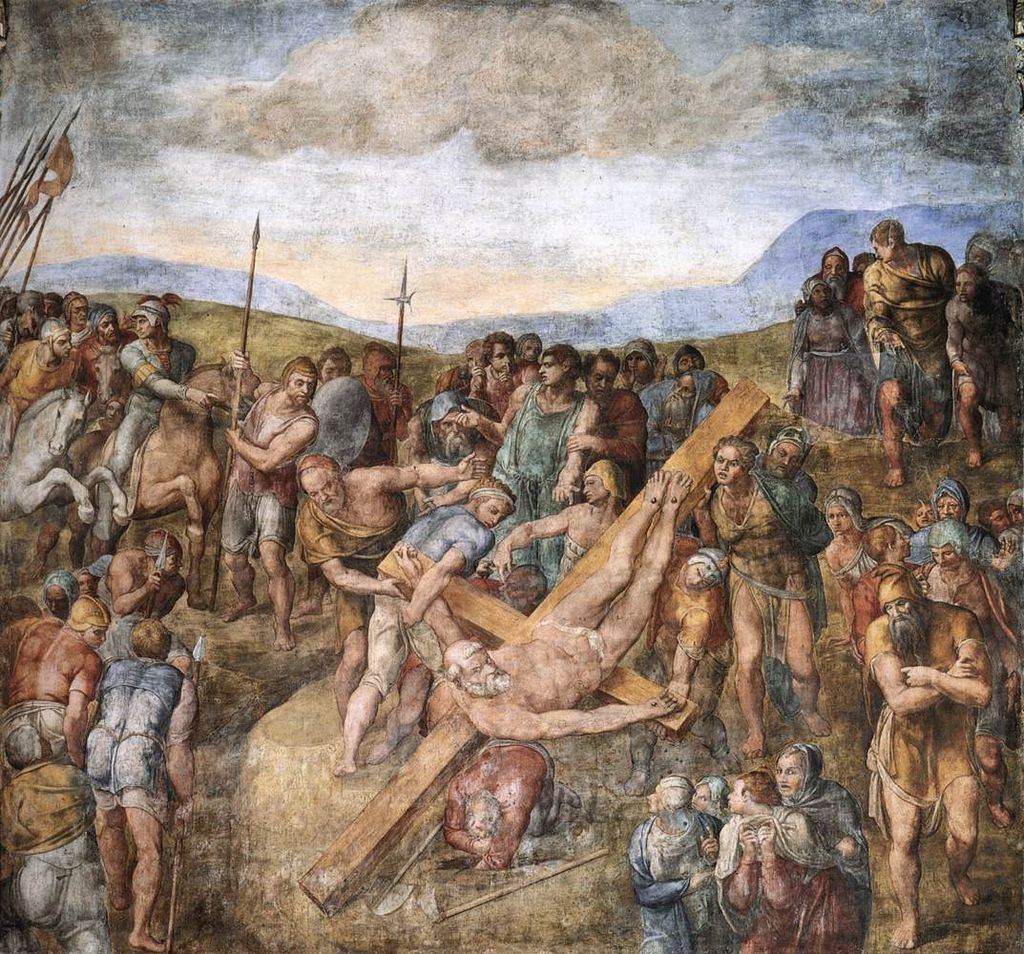
In his masterful “The Entombment of Christ,” Caravaggio exhibits extraordinary mastery of color and form that goes well beyond mere aesthetics. Every brushstroke, every contrast of light and shadow, is a coded language that opens the doors to deeper meanings. The master of Italian Baroque does not just represent a religious scene; he weaves a complex narrative, laden with symbolism and subtle but penetrating emotions, capturing the essence of the divine and the human.
His sensitivity in using religious symbolism reveals a rare emotional and spiritual intelligence. From every detail emerges his deep awareness of the Scriptures and ecclesiastical traditions, making the painting not just an artistic masterpiece, but also a theological enigma to decipher. The marble slab, the dwarf yew, the hands of Christ, each element serves as a tessera in a larger mosaic that composes a portrait of both earthly suffering and heavenly hope.
The work is not just a painting; it’s an invitation. It urges the observer to linger, to ponder, and to immerse themselves in its multiple dimensions. Each approach to this canvas welcomes new discoveries, new layers of understanding that emerge as veils removed one by one. “The Entombment of Christ” is, in this sense, as much a spiritual journey as it is an artistic triumph. It invites prolonged observation and reflection, requiring not only a visual but also an emotional and intellectual immersion in that intricate tapestry of symbolism and meaning it represents.
Marco Mattiuzzi



